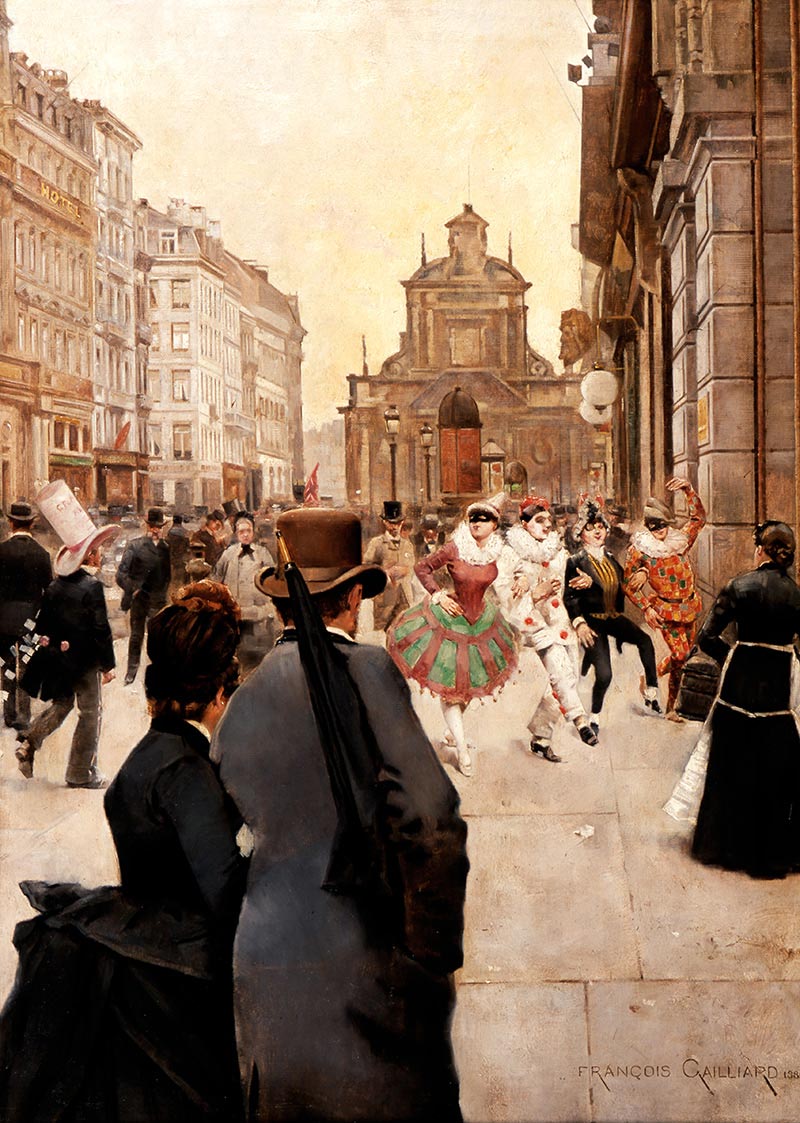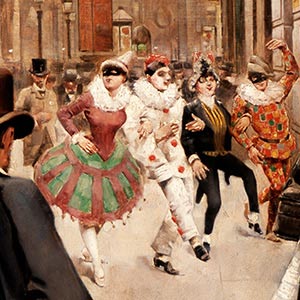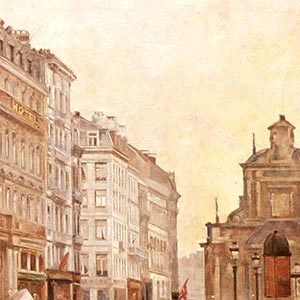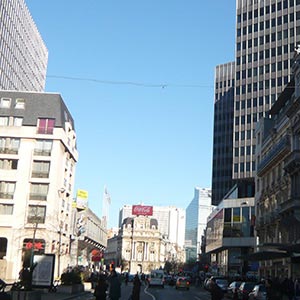
Oil painting. François Gailliard. 1886
The Brussels painter François Gailliard (1831-1932) is renowned for his street scenes in the Belgian capital, depicting snippets of everyday life. Featuring the wide boulevards, this painting shows four individuals in carnival costume, caught up in a boisterous group of people, who are attracting the attention of a bourgeois couple seen from behind.
Carnival in Brussels
 In the run-up to Lent, carnival time is traditionally regarded as an opportunity to indulge in feasting and merriment. In the 19th century Brussels citizens from privileged backgrounds would participate in fancy-dress balls, while the more spirited and popular gatherings would take place in the streets. This tradition disappeared from the city of Brussels during the 20th century. Nowadays only children's activities are still organised there, while carnival processions parade through the streets of certain adjoining districts such as Schaerbeek.
In the run-up to Lent, carnival time is traditionally regarded as an opportunity to indulge in feasting and merriment. In the 19th century Brussels citizens from privileged backgrounds would participate in fancy-dress balls, while the more spirited and popular gatherings would take place in the streets. This tradition disappeared from the city of Brussels during the 20th century. Nowadays only children's activities are still organised there, while carnival processions parade through the streets of certain adjoining districts such as Schaerbeek.
Wide boulevards
 The Boulevard Central (now called Boulevard Anspach) came into being in the midst of work undertaken from 1867 to 1871 to substantially change the configuration of the downtown area. A constant source of flooding, the meandering River Senne with its awful stench was recognised as a health hazard and so it was decided to obscure it from public view in a new vaulted bed. At surface level, large straight thoroughfares were extended through the ruins of the old districts regarded as unhygienic, thus allowing traffic to move quickly between the northern and southern districts of the city. These new boulevards were gradually lined with apartment buildings and prestigious, commercial and recreational facilities.
The Boulevard Central (now called Boulevard Anspach) came into being in the midst of work undertaken from 1867 to 1871 to substantially change the configuration of the downtown area. A constant source of flooding, the meandering River Senne with its awful stench was recognised as a health hazard and so it was decided to obscure it from public view in a new vaulted bed. At surface level, large straight thoroughfares were extended through the ruins of the old districts regarded as unhygienic, thus allowing traffic to move quickly between the northern and southern districts of the city. These new boulevards were gradually lined with apartment buildings and prestigious, commercial and recreational facilities.
The view now lost
 The view from the Boulevard Central extended as far as the disaffected 17th century Augustinian church. This was demolished in the late 19th century to ease the movement of traffic and develop the Place de Brouckère. The buildings depicted on the left-hand side were replaced by residential property and an office tower in the second half of the 20th century.
The view from the Boulevard Central extended as far as the disaffected 17th century Augustinian church. This was demolished in the late 19th century to ease the movement of traffic and develop the Place de Brouckère. The buildings depicted on the left-hand side were replaced by residential property and an office tower in the second half of the 20th century.
Next step
Now turn back to the section dedicated to green spaces. You can find it in the large picture showing the Royal Park. On the panel on the right, several paintings depict the former Palace of Brussels.




